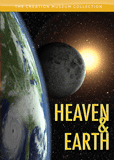Are Plants “Alive”?
Hall of Life—Plant Exhibits
on July 11, 2016Plants grow and reproduce, and many scientists consider plants “alive” in the biological sense.
However, according to the Word of God, there is a significant difference between plant “life,” on the one hand, and animal and human life, on the other hand. Throughout the Bible, the Hebrew words nephesh chayyâh are used to describe human and animal life (e.g., Genesis 1:20–21, 24, 30; 27). When referring to mankind, nephesh chayyâh means “living soul” or “soulish creature,” and when it refers to animals, it means “living creature.” However, these words are never applied to plant life. There is a plain distinction.
God created all of the original plant kinds on Day 3 of Creation Week (Genesis 1:11). As you walk through the exhibits that feature different types of vegetation, look for plant features that are beneficial to humans. Although their medicinal properties would not have been needed before the Fall, plants were the only source of food for Adam and Eve while they were in the Garden of Eden (Genesis 1:29–30).
For more information, visit www.answersingenesis.org/biology/plants/do-leaves-die/.
Related Media
Cursed Plants
Plants
Related Downloads
Plants—but they’re not “nephesh!”
Audio DownloadMuseum Guide
Are you exasperated by all the hype about "millions of years" in secular museums? The Museum Guide will help!
Browse Kids BookRecommended Resources
- © 2025 Answers in Genesis
- Privacy Policy
- Contact
- About


